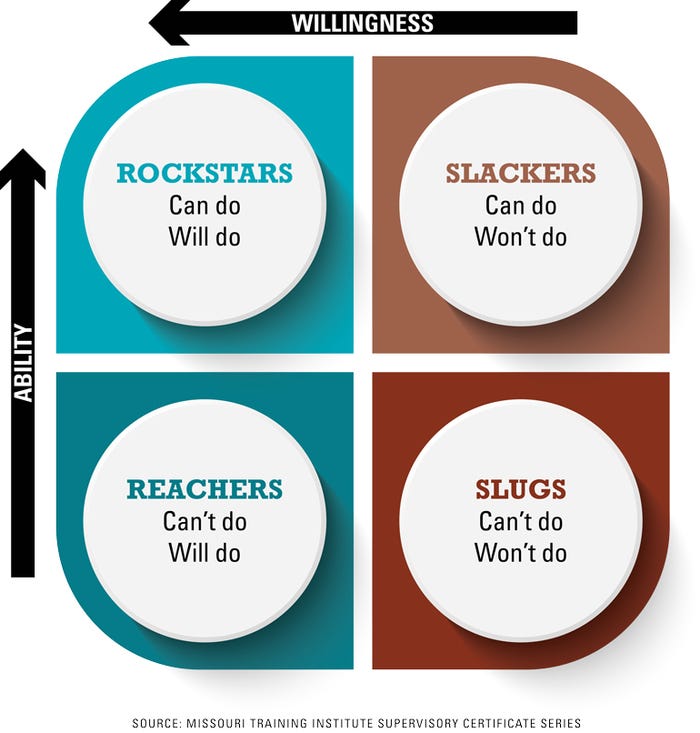May 23, 2022

Editor’s note: This is the first in two-part series on farm employee management. Come back Tuesday to see how to motivate each member of your farm operation.
Today, maybe more than ever, U.S. employers struggle to retain workers. We see the same situation in agriculture. Keeping good farm laborers has become more and more difficult. Even if you don’t have paid employees, the same challenge applies to family members who work in the farm operation.
Several years ago, a team and I traveled across Missouri to offer a series of farm labor management workshops. My co-workers recently updated the 51-page Missouri Farm Labor Guide we shared during those workshops. You can download a free copy at muext.us/farmlaborguide.
As I spoke to the attendees about motivating and training employees, one exercise I enjoyed teaching was the “can-do, will-do” matrix.

Identify your employees
The above “can-do, will-do” matrix has two variables: an employee’s ability to do the job and willingness to do the job. By moving from bottom to top, ability increases. Moving from right to left, willingness increases.
Matrix in hand, assess each of your farm employees. Here are four types of employees:
Rockstar. You find this individual in the top-left quadrant. With a can-do, will-do spirit, these talented employees do their jobs well, and are highly willing or motivated to complete tasks given to them.
Reacher. These can’t-do, will-do employees in the bottom-left quadrant have weaker abilities, but they are willing to do tasks if they could. He or she is motivated, but lacks the same talents as others.
Slacker. In the upper-right quadrant are can-do, won’t-do workers. They are highly skilled and could be great employees. However, they simply don’t have the motivation, or don’t share the willingness to do a good job.
Slug. This employee fits in the bottom-right quadrant. They lack both ability and willingness to do the job. They are our least productive members on the team.
Farm managers can use the matrix to make decisions about how to invest in employees, so those workers maximize their contributions to the business. Next, it is time to develop a strategy for developing with each type of farm employee.
Tucker is a University of Missouri Extension ag business specialist and succession planner. He can be reached at [email protected] or 417-326-4916.
You May Also Like




